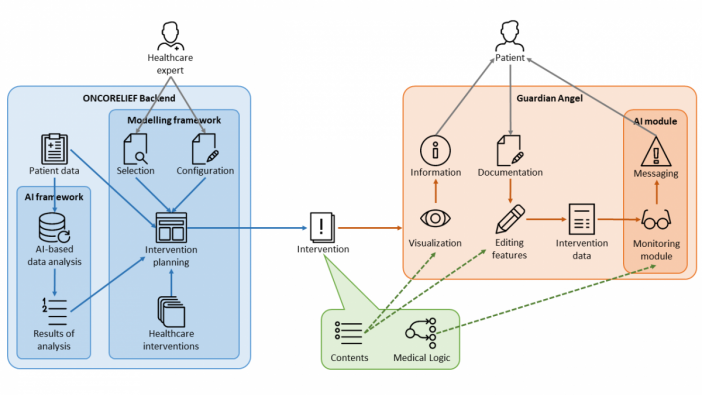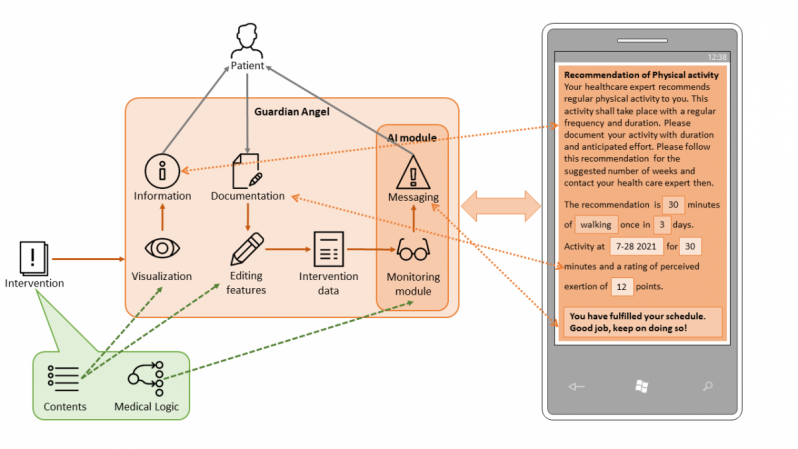AI solutions in healthcare – benefits and risks
Digitalization causes enormous changes in many parts of the healthcare sector. Clinical staff make good use of smart software tools in therapy planning or quality assured documentation. Researchers utilize advanced AI methods for big data applications. Hobby sportspersons use generic mobile applications for documentation and basic analysis of their exercise activities.
These big benefits of AI-based solutions in healthcare are opposed by potential risks resulting from their unreflected use. Clinicians and researchers can rely on their medical expertise when dealing with such software tools and their results. Healthy sportspersons experience rather low risks related to less suitable exercise programs.
However, the situation is different for people with severe diseases such as cancer, cardiac or respiratory impairments. In particular, the post-therapeutic phase, which often features severe weakenings by the previous therapy and no close supervision by medical experts, is a critical time for patients. While it is clear that post-treatment patients could benefit a lot from assisting digital solutions, there is also a risk from an autonomous use of such software tools without having the human medical expert in the loop.
The ONCORELIEF approach to safe AI solutions
ONCORELIEF heads for a solution concept that allows for an safe independent use of smart AI-based digital tools by patients while keeping the related inevitable risks very low. The main idea is provide the patient with a smart mobile application, which he/she can interact with autonomously without direct involvement of a healthcare expert, but have this app configured by the healthcare expert according to the patient’s specific needs. The mobile application thereby essentially attains the role of the absent healthcare expert in guiding the patient individually.

This solution concept consists of the following components and work steps respectively:
1.The patient data available in the ONCORELIEF backend forms the main information input of intervention planning. This data typically undergoes an AI-based data analysis, which yields additional findings about the interpretation of the patient case and its future handling. Patient data and results of analysis then enter the modelling framework for intervention planning.
2.In intervention planning, the healthcare expert examines the patient data and results of analysis and creates the most suitable interventions for his/her patient. Here, he/she can use of healthcare interventions provided by the ONCORELIEF backend. The healthcare expert may take the results of analysis as an orientation for selecting interventions. However, he/she is completely free in his/her decision making. Furthermore, the healthcare expert can configure a selected intervention according to his/her patient’s specific needs. The ONCORELIEF solution concept thus features the human in the loop, provides him/her with detailed information about the planning situation and full freedom of decision for intervention planning.
3.An intervention consists of a description of its specific contents and a specification of the corresponding medical logic. The intervention contents carry the guiding information for the patient about what he/she is supposed to do and how to document it. The medical logic describes how the intervention shall be monitored. After configuring the contents and medical logic individually for the patient, the healthcare expert sends the intervention tot he Guardian Angel mobile application on the patient’s smartphone.
4.The Guardian Angel processes the interventions contents, visualizes the guiding information to the patient and provides him/her with editing features to document the intervention progress with. The medical logic enters the AI module of the Guardian Angel, which computes the conditions on the documented intervention data. These computations yield feedback messages, which are displayed for the patient. The Guardian Angel thereby guides a patient in the post-therapeutic phase according to his/her specific needs as recommended by the healthcare expert.

The ONCORELIEF solution concept thus allows for wide exploitation of the curative potential provided by digital healthcare solutions whiel simultaneously avoiding the typical risks arising from their autonomous use without direct involvement of healthcare experts.
